Personal finance is often perceived as a complex, daunting field reserved for experts. The truth, however, is that financial well-being is an attainable destination for anyone willing to embark on a structured journey of financial education. This journey, which typically progresses from mastering budgeting to confidently engaging in investing, is a fundamental pathway to building lasting wealth and financial freedom.
Phase 1: The Foundation — Mastering Budgeting and Cash Flow
The starting point of any successful financial endeavor is a clear understanding of where your money is going. Budgeting isn’t a restrictive chore; it’s a powerful tool for clarity, control, and conscious decision-making.
1. The Anatomy of a Budget
A budget is simply a plan for your money. It ensures that your income exceeds your expenses, creating a positive cash flow. To build a truly effective budget, you must first accurately track your income and all your expenditures for at least one month.
- Income: Net pay from all sources.
- Fixed Expenses: Costs that remain constant (rent/mortgage, insurance, loan payments).
- Variable Expenses: Costs that fluctuate (groceries, utilities, entertainment, dining out).
2. Choosing Your Budgeting Philosophy
There isn’t a one-size-fits-all budget. Finding a system that aligns with your personality is crucial for adherence.
| Budgeting Method | Core Principle | Best For |
| 50/30/20 Rule | 50% Needs, 30% Wants, 20% Savings/Debt Repayment. | Beginners seeking a simple, balanced approach. |
| Zero-Based Budgeting | Every dollar of income is assigned a ‘job’ (Income – Expenses – Savings = $0). | Those who need maximum control and accountability. |
| Envelope System | Allocating cash for variable expenses into physical envelopes. | Individuals who tend to overspend on non-essentials. |
3. The Debt Detox: Clearing the Path
Before progressing to the growth phase (investing), it’s often wise to aggressively tackle high-interest debt, such as credit card balances or personal loans. The interest rate on this debt often far outstrips any potential investment return, making debt repayment the most immediate and guaranteed ‘return on investment.’ Two common strategies include:
- Debt Snowball: Pay off the smallest debt first to gain motivational wins.
- Debt Avalanche: Pay off the debt with the highest interest rate first to save the most money overall.
Phase 2: The Safety Net — Emergency Funds and Goal Setting
A budget creates surplus cash flow; the next step is protecting that surplus. Financial stability is impossible without a robust buffer against life’s inevitable shocks.
1. Building the Emergency Fund
An emergency fund is a liquid pool of cash, held in a high-yield savings account, dedicated solely to unexpected expenses (job loss, medical emergency, car repair).
- Starter Fund: Aim for $1,000 as a quick, initial barrier against minor setbacks.
- Full Fund: Progress to saving enough to cover 3 to 6 months of essential living expenses. This provides a significant safety cushion, ensuring you don’t derail your financial plan or resort to high-interest debt when a major crisis hits.
2. Defining Financial Goals (S.M.A.R.T.)
Investing without goals is like sailing without a map. Before you invest, clarify what you’re saving for, and over what timeframe. Use the S.M.A.R.T. framework:
- Specific (What exactly do you want to achieve?)
- Measurable (How will you track progress?)
- Achievable (Is it realistic?)
- Relevant (Does it align with your values?)
- Time-bound (When do you want to achieve it?)
- Short-term (1-3 years): Down payment for a car, vacation savings.
- Medium-term (3-10 years): Down payment for a house, starting a business.
- Long-term (10+ years): Retirement, child’s college fund.
Phase 3: The Growth Engine — Introduction to Investing
Once your emergency fund is secure and high-interest debt is managed, you are ready to transition from a saver to an investor. Investing is the process of putting your money to work with the expectation of generating a profit or return over time, allowing your wealth to grow exponentially through the power of compounding.
1. The Power of Compounding
Compounding is the crucial concept that differentiates saving from investing. It means earning a return not just on your initial investment, but also on the reinvested returns from previous periods. The sooner you start, the more time compounding has to work its magic.
2. Understanding Risk and Return
Every investment involves a trade-off between risk and potential return.
- High Risk, High Potential Return: Stocks in individual companies, cryptocurrencies, emerging markets.
- Low Risk, Lower Potential Return: Government bonds, certificates of deposit (CDs), high-yield savings accounts.
The key is determining your risk tolerance—your ability and willingness to endure fluctuations (volatility) in the value of your investments. A young investor with decades until retirement can typically afford to take on more risk than someone nearing retirement.
3. Core Investment Vehicles for Beginners
You don’t need to pick individual stocks to be a successful investor. Most financial advisors recommend starting with diversified, low-cost options:
- Retirement Accounts (401(k), IRA): These offer significant tax advantages and are often the best place to start, especially if your employer offers a matching contribution (which is essentially free money).
- Index Funds and ETFs (Exchange-Traded Funds): These are baskets of stocks or bonds that track a specific market index, such as the S&P 500. They provide instant diversification across hundreds or thousands of companies, significantly reducing the risk associated with a single stock. They are typically low-cost and ideal for long-term, passive growth.
- Bonds: Essentially loans made to a government or corporation. They are generally less volatile than stocks and provide a fixed income stream.
4. The Principle of Diversification
Never put all your eggs in one basket. Diversification involves spreading your investments across different asset classes (stocks, bonds, real estate), industries, and geographical regions. If one part of the market performs poorly, the impact on your overall portfolio is mitigated by gains elsewhere. This is the cornerstone of risk management.
Phase 4: Lifelong Learning and Adjustments
Financial education is not a destination but a continuous process. The economic landscape, your income, and your goals will change over time, requiring periodic review and adjustment.
1. Review and Rebalance
Commit to reviewing your budget and investment portfolio at least once or twice a year.
- Budget Check: Are your spending habits still aligned with your goals? Are your fixed expenses still reasonable?
- Portfolio Rebalancing: Over time, some investments will grow faster than others, changing your desired asset allocation. Rebalancing means selling some of your ‘winners’ and buying more of your ‘losers’ to bring your portfolio back to your target risk level.
2. Continuous Education
The most successful investors are perpetual students. Read reputable financial news, listen to educational podcasts, and consult with a qualified, fee-only financial advisor if you need personalized, conflict-free advice. Avoid ‘get-rich-quick’ schemes and overly aggressive, undiversified bets. The slow, steady, and disciplined approach is the one that reliably wins the race.
Conclusion: Taking the First Step
The journey from budgeting to investing is a marathon, not a sprint. It demands discipline, patience, and a commitment to continuous learning. By first establishing control over your cash flow through diligent budgeting, securing your future with an emergency fund, and then employing the power of diversified, long-term investing, you transition from merely surviving financially to actively building a life of financial security and abundance. The most critical step on this entire journey is simply starting. Take control of your money today, and pave the way for a wealthier, more secure tomorrow.



